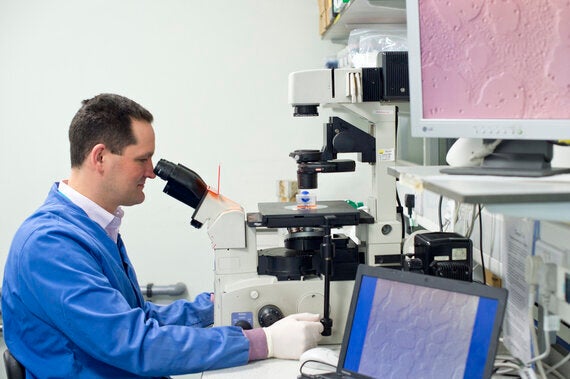Valentine's Day shouldn't be a day about broken hearts but over half a million people in the UK, and millions around the world, have to live with a broken heart every day. These people have a condition called heart failure where their heart simply can't pump blood around the body properly.
Heart failure isn't as well-known as its major cause - heart attack, which can permanently damage the heart affecting its ability to function. But heart failure's lack of awareness is not reflective of its impact. The condition can be debilitating. A person's life can be severely limited because their heart just can't do its job properly. There is currently no cure, and in its severest form heart failure has a life expectancy worse than most cancers.
But there is hope. We continue to fund world class research into ways to repair and regenerate the broken hearts of people with heart failure. And this week the Prime Minister announced new research projects we're helping to fund as part of a major international research collaboration between top UK and Israeli scientists. One project is exploring whether light could be key to mending broken hearts.
Researchers can now grow new heart tissue in the lab from stem cells and they're working towards grafting these patches onto the weakened heart to help it pump better.
Unfortunately these patches can have their own heart rhythm separate from the rest of the heart and using these on a sick patient could be dangerous. Professor Chris Denning, who leads the research at University of Nottingham, is working on a pacemaker that uses light to control the graft's heartbeat so it is in sync with the heart.

The scientists are editing the DNA instruction manual of stem cells so that they contain two special proteins. One protein triggers electrical activity in response to blue light and one suppresses it if a yellow light is shone on the cell. Professor Denning and his colleagues in Israel can then grow heart muscle cells from these stem cells that also contain the proteins.
The theory is that when a tissue patch is grown using these cells they can then use a light-emitting pacemaker to help it maintain a healthy heart rhythm. This approach is better than using a standard electrical pacemaker because that would affect the main heart, as well as the patch.
This incredible research is genuinely at the cutting-edge of what is possible in medical science. And it is only possible because of public donations and a pioneering collaboration between top scientists in the UK and Israel. A collaboration made possible by the British Council's Britain Israel Research and Academic Exchange Partnership (BIRAX).
We believe we can end broken hearts by funding more research like Professor Denning's. Future breakthroughs from this kind of research could be life-changing for millions around the world. To find out more visit bhf.org.uk/mbh.